#TBT Gallet Multichron 12 Valjoux 72
Normally, I refrain from writing separate articles on variants of the same watch, but when I picked up a second Gallet Multichron 12 Valjoux 72, I felt it was time to spread the news. On #TBT, I’ve had the pleasure of covering an Excelsior Park 40 “EP40” Multichron and it is one fantastic watch with an equally stupendous movement. My fondness for these watches was also shown when we named the Gallet one of our “5 More” to look for in our “Top 5 Vintage Chronographs” article. However, as the 1960’s are really my wheelhouse when it comes to chronographs, the “V72” truly speaks to me. Yes, I’ve said it before, this is essentially the Chevrolet 327 V-8 of watch movements – used all over and still relatively easy to find and fix. The movement has powered everything from the Heuer Carrera & Autavia, the Rolex Daytona, Enicar Sherpa Graphs, and so many others. The movement finally found its way into the Multichron after the company moved away from the EP40. In this week’s #TBT, we’ll take a look at not one, but two versions of this watch.
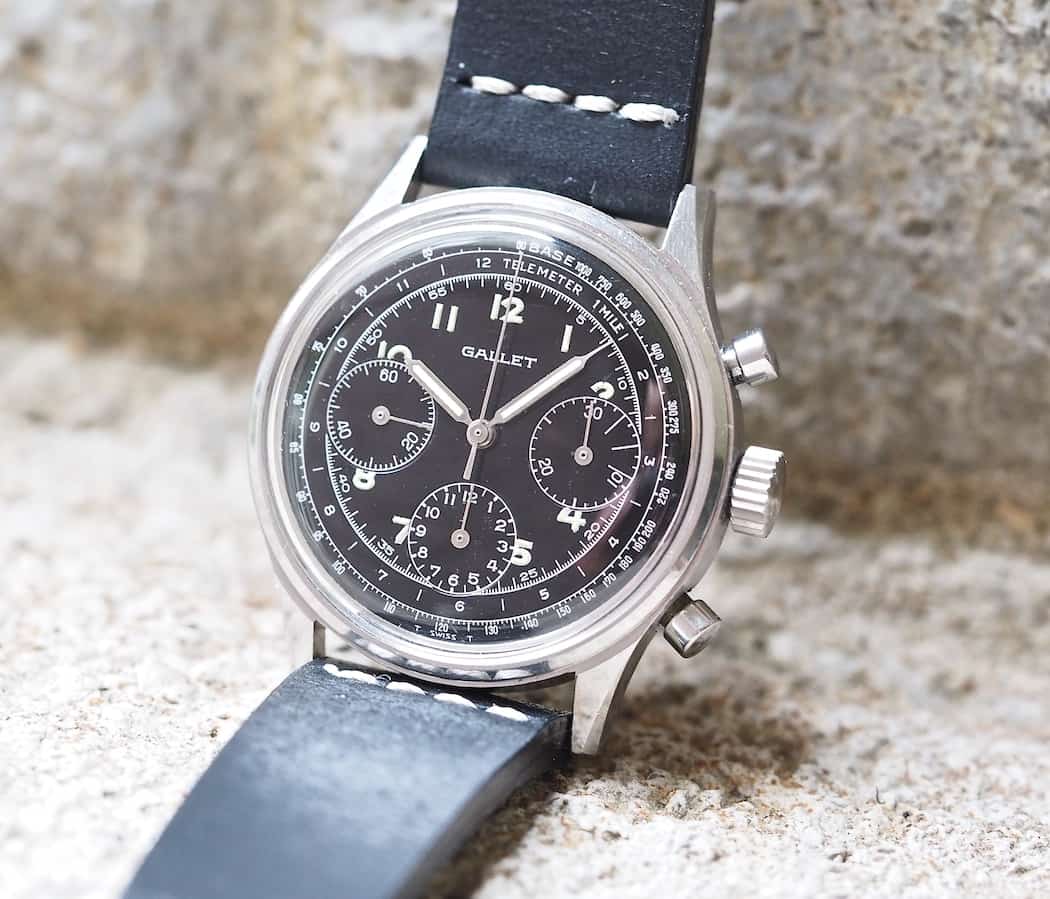
The Gallet Multichron 12 in black
The Gallet Multichron 12 in Black…
It’s funny, when one has a chat with @watchfred, he’ll tell you that amongst all of his chronographs, one of his favorites is the Gallet Multichron 12. If you follow him on Instagram, you’ll see that he certainly owns some far more exotic pieces, but the Gallet continues to impress. Why is that? Well, Fred points out the fantastic dial, great heritage, and beautiful balance. Admittedly, he loves the black dial most. This is actually where I started my Gallet collection – with the black dialed piece you see in front of you. I picked it up from eBay about a year ago based on the recommendation of Fred. The pictures were so bad that it ended up as something that never occurs in today’s fiery market – a one bid uncontested seven-day auction with me as the winner for $2,000. Under the bad images and dust-filled crystal, though, was a watch that now looks amazing after a service. Plus, the case is extremely sharp. Today, these now routinely fetch $3,000 – 3,500 and like most watches from this era, they’re climbing.
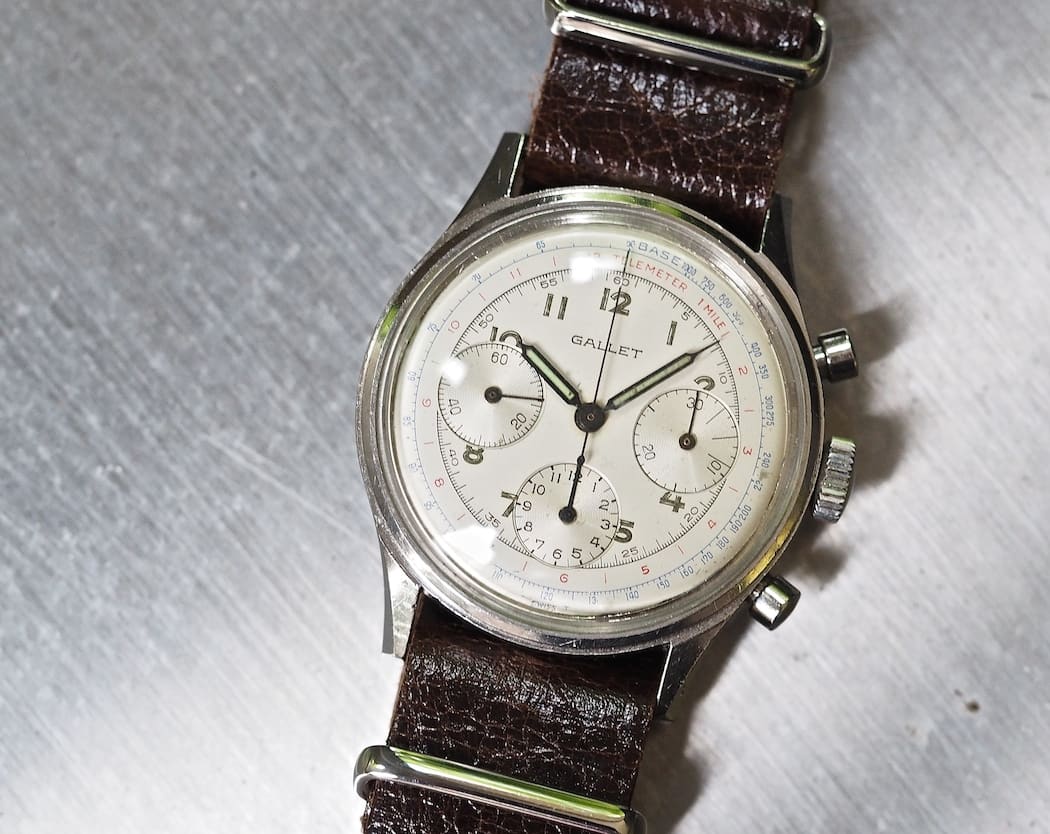
Black or white, the Gallet Multichron 12 is a beautiful chronograph
Or the Gallet Multichron 12 in White…
On the lighter side, we have a white-dialed Gallet Multichron 12. These pieces normally sell for a discount versus their darker counterparts, but the watch before you deserves a little more explanation. You see, white-dialed Multichron 12’s with EP40’s are rather common, but I had never seen one with a Valjoux 72. In fact, after doing some research and before buying, I found exactly one other that had been for sale. So, yes, they’re rare and this was confirmed with a few Gallet collectors that I know. This one, incidentally, recently sat on eBay for a couple weeks as a buy-it-now or best offer that ended up at roughly $2,100. Value-wise, I suppose these follow the rule of lighter dials selling for less than the black versions, but I do have to take into account the rarity of this version.
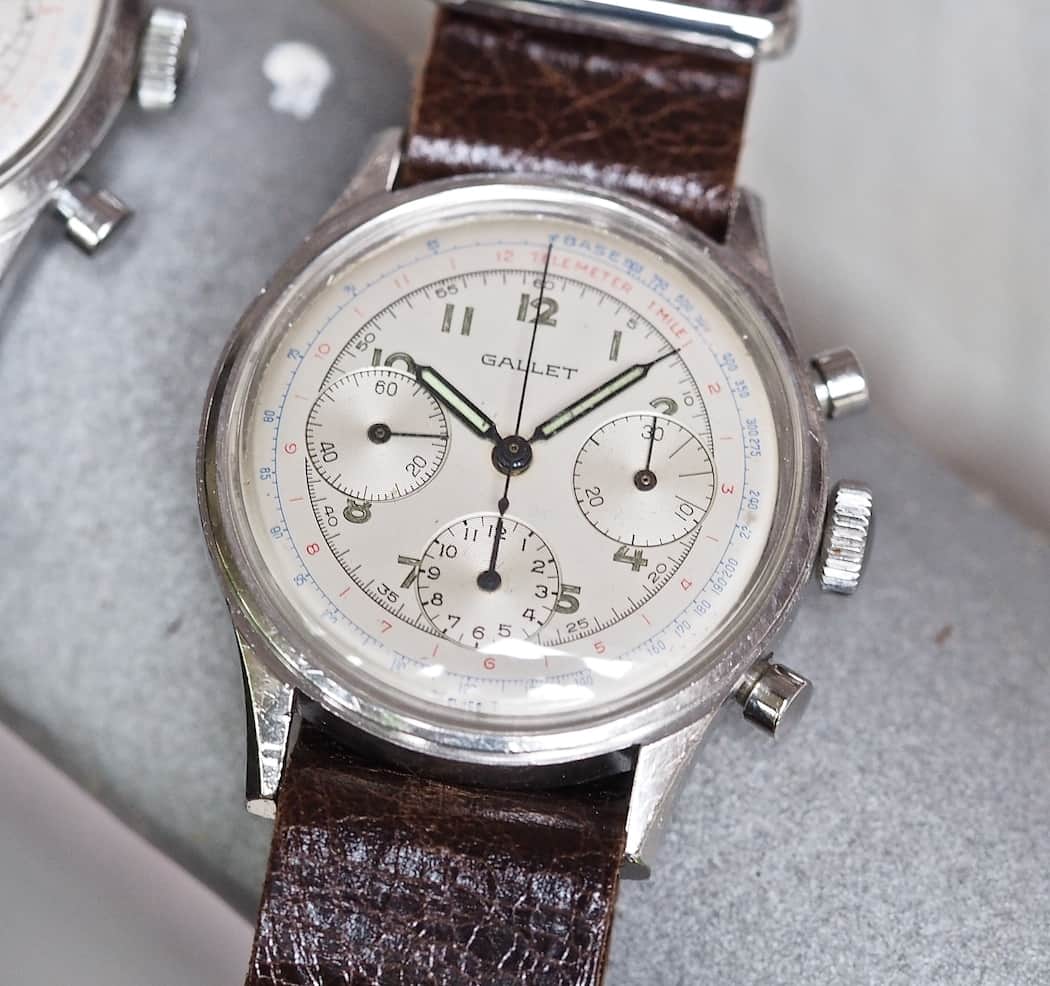
Note the sharp chamfers on the case of the Gallet Multichron 12
The Gallet Multichron 12…details
Whether you choose ebony or ivory for your Gallet Multichron 12, you’ll end up with a 38mm chronograph that features a 20mm lug width. The Gallet is equipped with a big fat crown (the white one is likely original as I had to replace the one on the black dial) and two nicely sized cap pushers. The stainless case has some beautifully proportioned lugs with reverse triangular chamfers similar to those found on other Gallets but also on many Breitlings from the era.
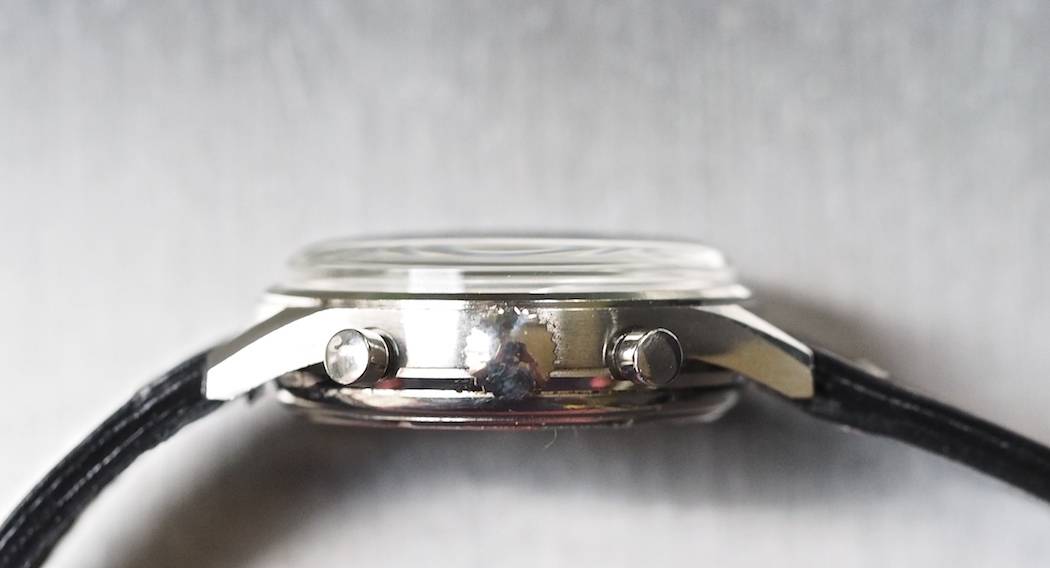
A side view of the Gallet Multichron 12
The crystal is domed acrylic and the caseback is screw-down.
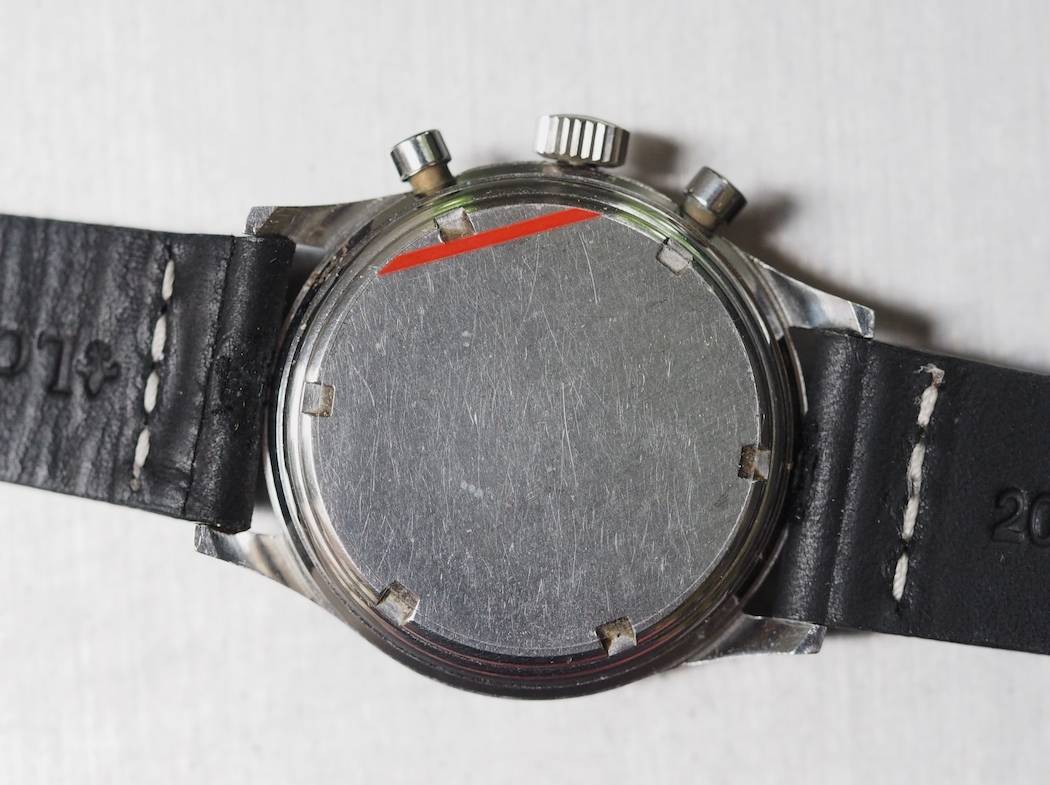
The screw down case back of the Gallet Multichron 12
Apparently, when new, these watches were good for 30m of water resistance – hmm.
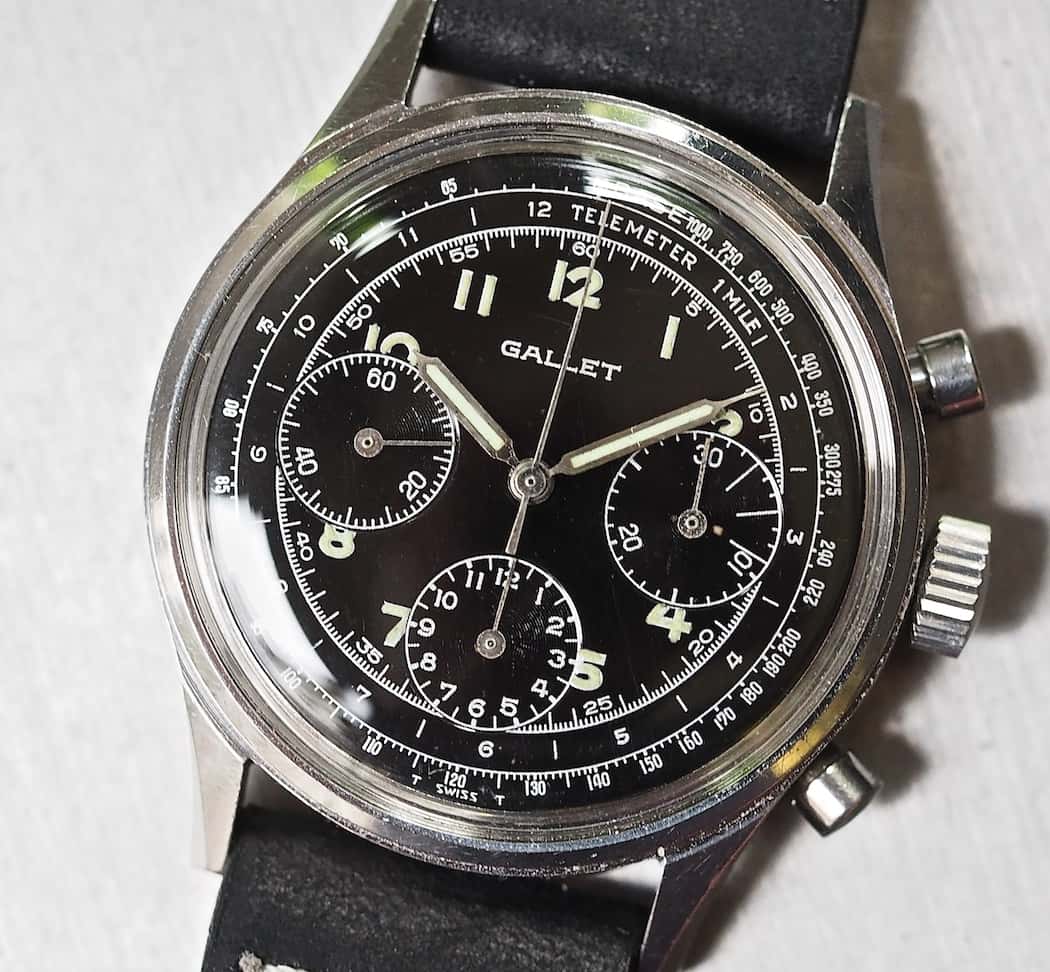
On the V72 version of the Gallet Multichron 12, the sub registers slightly overhang the minutes scale
Oh that dial…
As with any watch, the dial is the highlight and so it goes with the Gallet Multichron 12. Both of these pieces define classic chronograph when it comes to their design. I’ll absolutely side with Fred that the black dial is something special to behold. It’s glossy but with its ridged sub registers really has a lot of detail. The applied lume numerals also stand out more so on this version too. Finally, the application of silver hands adds some dress to this piece as well.
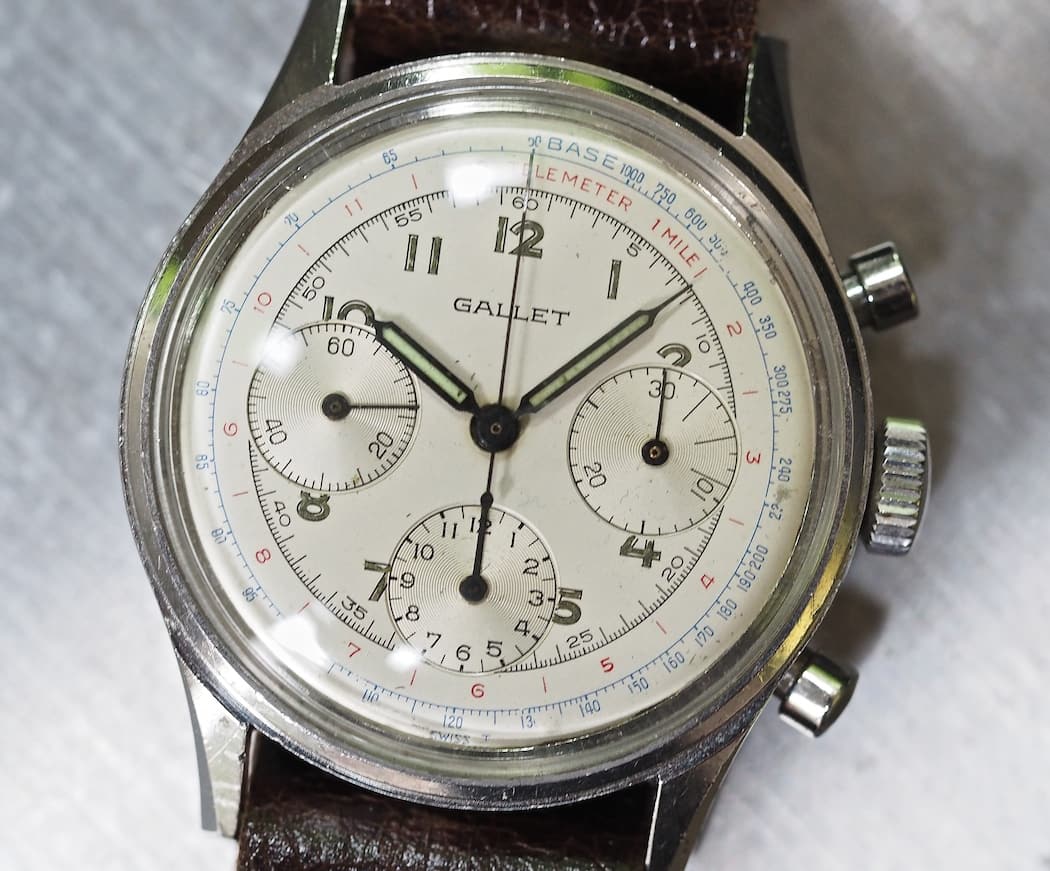
Note the radial sub registers on the Gallet Multichron 12
That being said, there’s little to complain about when looking at the white-dialed Multichron. It may lack the mysterious dark charm of its sister piece, but it makes up for this with sporty black hands and blue and red tachy and telemeter scales. In my mind, it looks a bit more old-fashioned, but it’s still a wonderfully designed watch. Plus, as is often the case with white, it looks a little bigger.
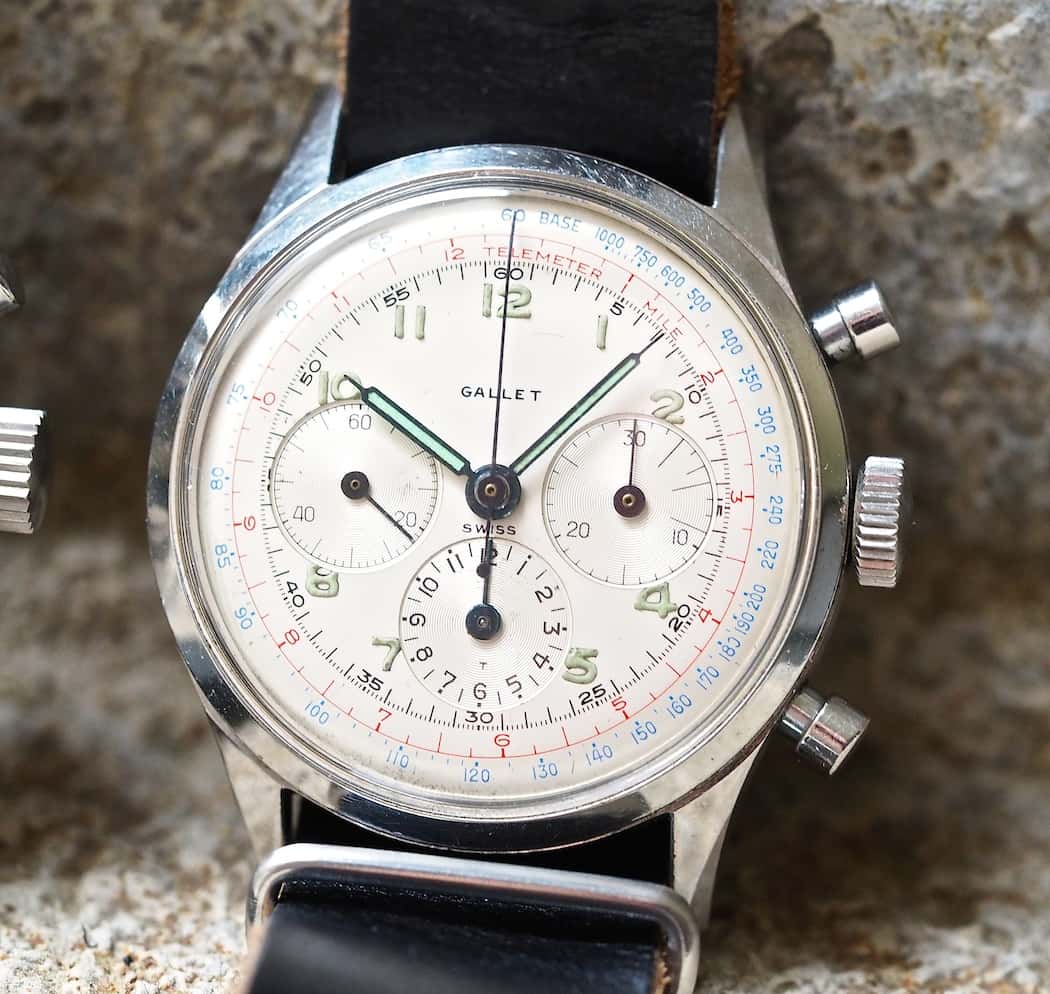
The Gallet Multichron 12 with an EP40 movement – note how the sub registers float inside of the minutes track
The V72 vs. the EP40
So, what’s the difference between a V72-powered Gallet Multichron 12 and an EP40 version? Functionally, they’re identical as both contain triple register designs with both 30-minute and 12-hour counters. Design-wise, they’re certainly similar size-wise – even the thickness is similar with the EP40 containing a seemingly more bulbous crystal – but there are differences with the dial. The notable difference is the fact that the outer edge of the sub registers on the EP40 lie within the 60-minute track while they overlap this track on the V72. Also, you’ll note that the font layout differs within these sub registers on the two models.
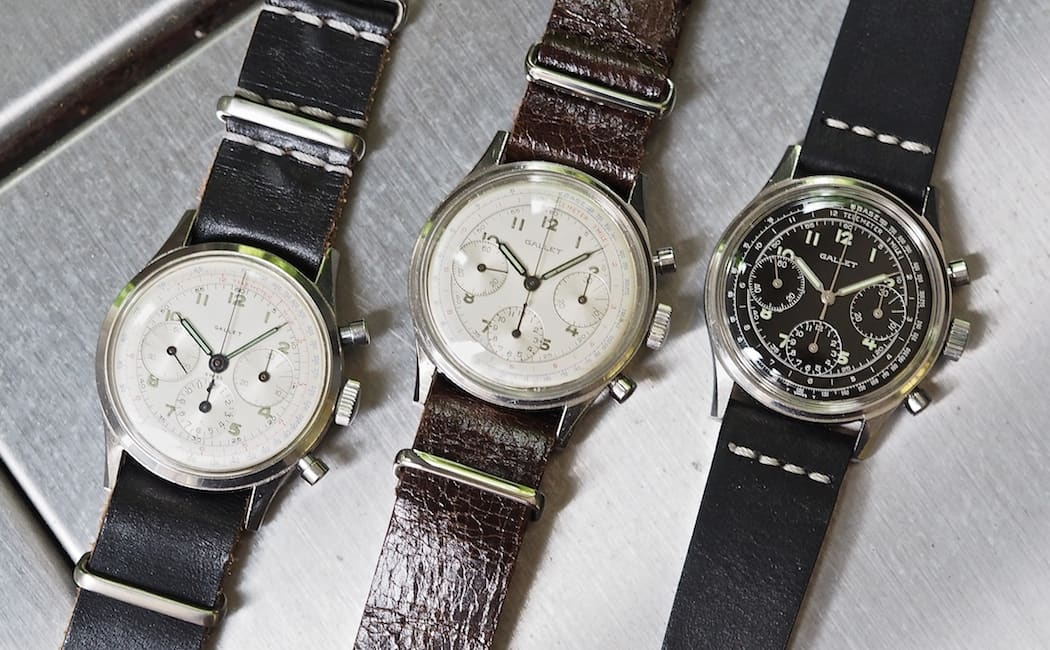
A trio of Gallet Multichron 12’s, from L to R, an EP40 and the two V72’s
You’ll also see that the “Gallet” name is a bit more prominent on the later, V72 models but both retain a similar style. This is in contrast to the later “Gallet” text that encompasses part of a watch dial within the “G”. Finally, the V72 models feature the trademark lower pusher that is further away from the winding crown than the top operator.
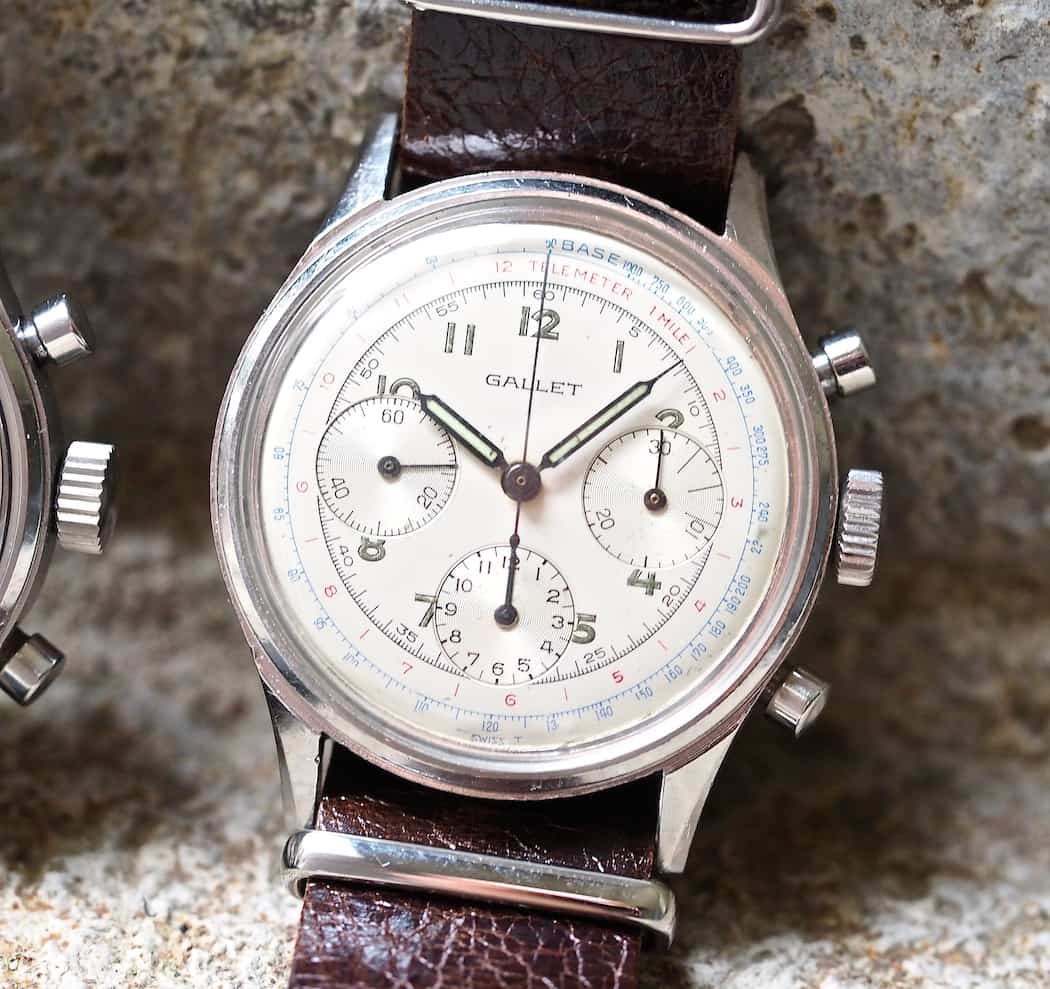
Note the black hands on the white dialed Gallet Multichron 12
The Multichron is the real deal
The Gallet Multichron 12 was made for decades: starting in the late 1940’s up until the early 1980’s. Aside from the various movements employed, there were stainless cased pieces like you see here and gold versions. Furthermore, there were pieces with both flat and round pushers. Overall, the watches aren’t what I’d call rare but as a company that also specializes in aircraft instruments made them, it’s hard to tell how these watches were distributed. I’d assume many were sold through equipment retailers – not unlike most early Heuers. Either way, Gallets have long remained under the radar for most collectors, but they’re now starting to catch fire. In fact, I’ve read – and been a part of – a couple recent articles on the crazy vintage chronograph market and Gallet continues to come up as a “best buy” brand. So, if you’re hearing that for the first time when reading this, go out and have a look on galletworld or on the web for some pictures of various Gallet models; I think you’ll come away impressed.
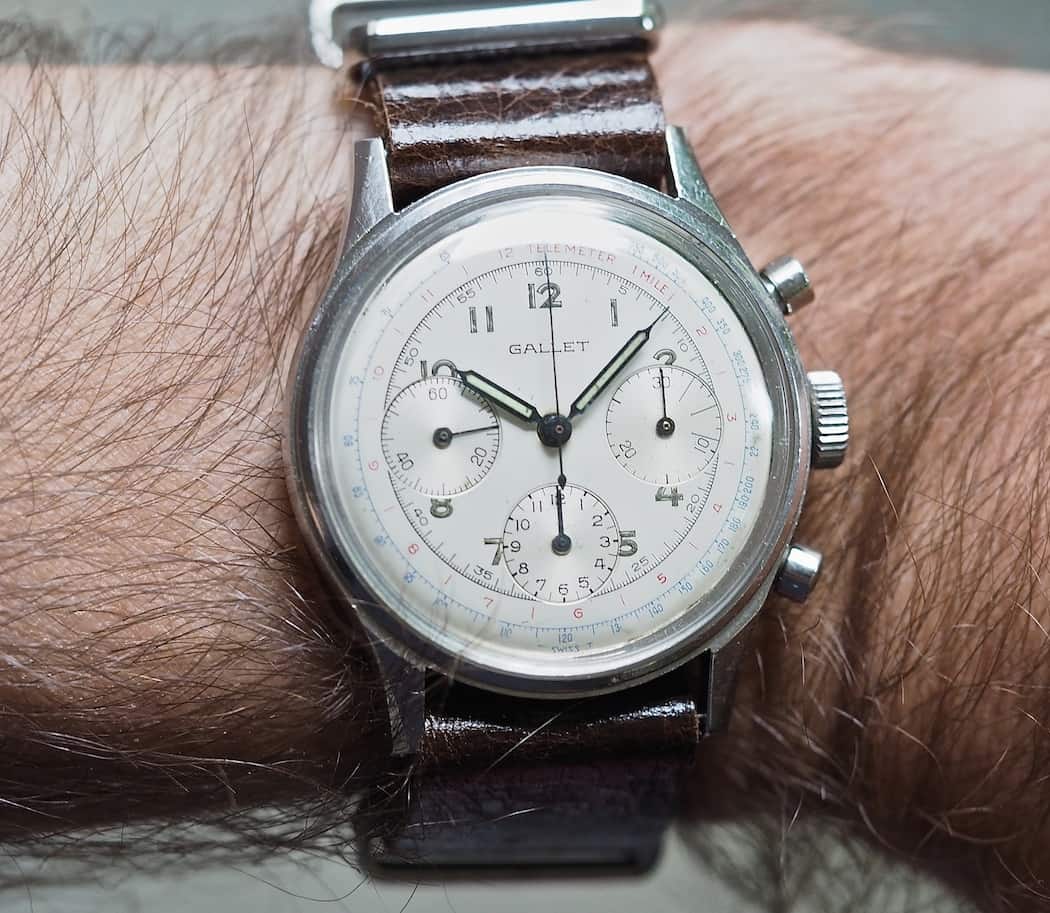
The white Gallet Multichron 12 on the wrist
Wearing the Multichron 12
The Gallet Multichron 12 is a watch that wears perfectly due to its size and its classic design. As I mentioned, with their tritium-lume applied numerals and multiple scales, these Gallets look decidedly older versus contemporaries such as the Carrera, Daytona or Speedmaster. However, this also gives them a more formal and, I’d say, a warmer quality. On something such as lizard or reptile, the Multichron looks much different than it does on something like a leather NATO or a, currently popular, rustic 2-piece strap with bold stitching at the top.
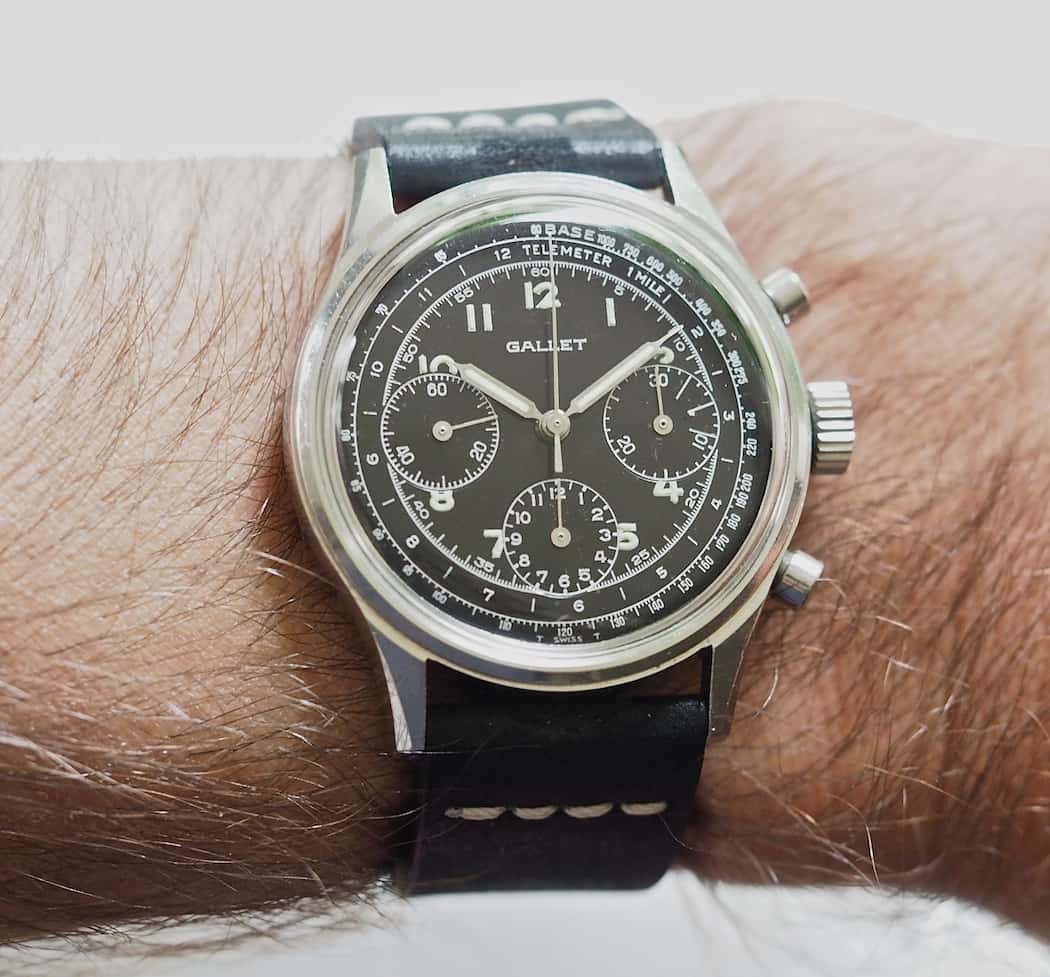
The black Gallet Multichron 12 on the wrist
One thing is interesting to note when fitting a strap to these V72 models. The lug holes are set further back into the lugs and this gives a lot less clearance between the spring bar and case. This differs highly from the EP40 Multichron, which even features nice cutouts on the sides of the case to help create more room. As you can see, I prefer the sportier look on these watches, but these Gallets are starting to wear on my straps!
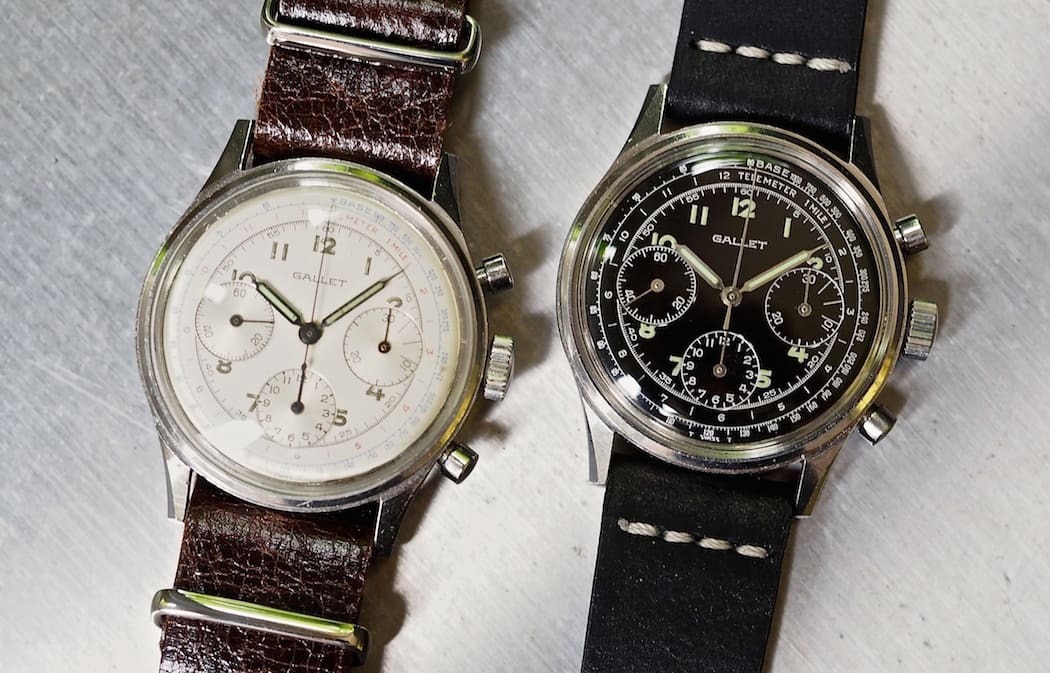
The Gallet Multichron 12 – Valjoux 72’s
In this world of ever-increasing prices for vintage chronographs, the Gallet Multichron 12 stands out as an absolute bargain. In the case of these Valjoux 72-equipped models, we have editions that are directly comparable to the best of the best from the 1960’s. Furthermore, we have a brand name in Gallet that’s as famous as most for their military, aviation and racing history. If you’re looking for a bona fide classic 60’s chronograph, I’d strongly recommend a nice Gallet…you won’t be sorry.


















